The Art of Banksy
Brisbane, Australia
Click on a pic to enlarge
You might like Michael Callaghan: https://thegodlesstraveller.com/personal-is-political/
You might like Michael Callaghan: https://thegodlesstraveller.com/personal-is-political/
In orchestral years Glenn’s career trajectory is fast tracking. This summation does not do justice to years of learning of course, and his arms, wrist, hands, and fingers bear the weight of practise perfecting artistry. His memory retains untold musical scores for solo, duet, trio, quartet, chamber, and orchestral violin. That’s a load for any person to carry.
As a lad in Mackay, Central Queensland, with the choice of picking up a tennis racquet, cricket bat, hockey stick, lacing on football boots, or donning swimming goggles. Glenn never wavered, he walked directly to the violin. Three and half years old and he knew.
Glenn threw down the gauntlet competing in 2009 at the prestigious Kendall National Violin Competition. The prize, a concert violin made from Australian wood by leading luthier (violin maker) Graham Caldersmith. Internationally renowned violinist Yehudi Menuhin, commented, “a great opportunity to own a real Australian violin…a wonderful instrument with a beautiful sound.”
Not only was Glenn announced competition winner taking the concert violin, but he also walked off with everything on offer; Bach Performance, Australian Composition, Audience Choice, and Timberlay International Travel Scholarship.
At this time, he was studying at the Queensland Conservatorium, Griffith University graduating in 2011 with a Bachelor of Music, First Class Honours. Repeating his earlier effort once again taking everything on offer, the Conservatorium Medal, the Music Medal, and the University Medal. The first graduate ever to be awarded the three highest prizes. Time to take his place in the world.
Glenn became Concertmaster of the Australian Youth Orchestra in 2012 and 2013 and an Australian Chamber Orchestra Emerging Artist in 2012. From 2012 to 2014, Principal First Violin in the Queensland Symphony Orchestra. He performed, broadcasting live on ABC Classic FM, was a finalist in the 2014 ABC Young Performer Awards. He moved to Sydney in 2014 becoming a full-time member of the Australian Chamber Orchestra under the demanding and watchful eye of Richard Tognetti. Six years later, in 2020, resigning to take up offers in Germany.
Next, everything stopped.
Globally contracts were cancelled, performances cancelled, theatres closed, entire orchestras unseated. Musicians, a close-knit community, left with nothing but to pack their instruments, and go home.
“In one fell swoop Covid decimated the livelihood of all artists,” said Glenn. “Our world ended. And it was rapid.”
“Fear is what I felt most strongly. Not for my health, but for my very existence having just left a full-time position.
“Luckily I had a contract waiting for me in Germany. But borders closed, international travel was restricted. As a non-essential service all movement was forbidden.
“I couldn’t get out of Sydney, even if I had a flight I wouldn’t gain entry.
“Much of the pandemic was spent shuffling emails between Germany keeping me hopeful the contract remained open. In isolation, I was fearful.”
 The position with Die Deutsche Kammerphilharmonie of Deputy Concertmaster and Principal 2nd Violin remained open. Glenn is now resident in Bremen.
The position with Die Deutsche Kammerphilharmonie of Deputy Concertmaster and Principal 2nd Violin remained open. Glenn is now resident in Bremen.
“Living in the heart and soul of European classical music is the quickest way to restore anyone’s optimism,” says Glenn.
“The orchestra’s management style is democratic, no hierarchy. Decisions are made laterally. If you work for the company you have input, everyone is valued. It’s a breath of fresh air.”
This has also allowed managing time to appear in Paris with Le Cercle de l’Harmonie, in Munich with Bavarian Radio Symphony Orchestra, and racking up frequent flyer points returning to Brisbane for the Queensland Symphony Orchestra.
Small wonder Glenn is in demand as a soloist, chamber musician and guest principal musician in Australia and internationally, appearing at festivals and masterclasses such as the Coriole Music Festival, Murten Classics, Musica Viva Festival, Bangalow Festival, Tyalgum Festival, and the International Musician’s Seminar, Prussia Cove.
Glenn still has time for a grand passion. The Mackay Chamber Music Festival, an annual festival he started in his hometown in 2018, of which he is Artistic Director.
“It’s thrilling,” said Glenn. “Mackay has its own classical music festival.”
“The best part is the feeling of community. I get to work with amazing musicians and music lovers on and off stage.
“It’s important to program works relevant to today’s audiences, so we have works by living Australian composers Anne Cawrse, Elizabeth Younan, Harry Sdraulig and Paul Stanhope, alongside classic works from Schubert, Mozart, and Mendelssohn.
“A rewarding initiative is giving young, and young at heart musicians, guidance through an extensive education program.
“Regardless of where you live, you should have access to wonderful music and music education.”
If a weekend in the country listening to world class chamber music appeals, dates for the fifth annual festival are 21-23 July 2023.
Exuding calm, meanwhile his internal driving mechanisms, intent and purpose, seldom lie idle. He observes, listens, considers. A man secure in his ability still seeking to grow, hone, question, learn. Astute, considered, even tempered, and unassuming, he laughs readily. I doubt he startles easily.
Glenn is still in the early stages of a musical career that promises longevity. Take note of his name and watch his star rise.
For further information on Mackay Chamber Music Festival visit: https://www.mackaycmf.com.au/
For more on Karen: https://thegodlesstraveller.com/karen-bailey/
To visit Karen’s website: https://www.karenbaileymillinery.com.au/
To enlarge click on a pic (where known photographer and model credited)
Photography: Aurobelle Photography
Richard Shaw Photography (Model: Lily Rose)
Daring to dream big pays dividends. Today in Paris, making a fashion runway statement, a hat by Australian milliner Karen Bailey.
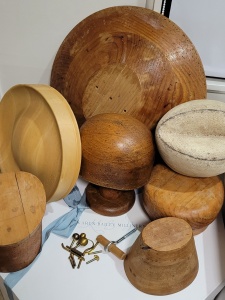 High reward indeed for what began from an overly imaginative eleven-year-old brim full of ideas deciding what her head needed best, was a hat. Grabbing her mother’s scissors, she eyed a piece of fabric and got to work. Nothing would get in the way of “finishing the hat, look I made a hat, where there never was a hat” to quote the overly imaginative lyricist Stephen Sondheim.
High reward indeed for what began from an overly imaginative eleven-year-old brim full of ideas deciding what her head needed best, was a hat. Grabbing her mother’s scissors, she eyed a piece of fabric and got to work. Nothing would get in the way of “finishing the hat, look I made a hat, where there never was a hat” to quote the overly imaginative lyricist Stephen Sondheim.
“I don’t remember exactly what the hat was like,” said Karen. “But I have never forgotten that piece of fabric. I cut it from one of my dresses. Something my mother was never happy about.”
But the seed was sewn. Nineteen, living in Rockhampton, Karen read an article about Peter Jago, Australia’s enfante terrible of millinery. Her mind was made up, but how. Should the word “hat” appear in any shape or form she tracked down the source hoping it would reveal information to acquire the art of millinery.
The answer came from a technical school in Sydney offering a correspondence course. Weeks’ worth of work arrived in bundles. Karen voraciously turned the material around, gaining marks in 90+ range, often creatively inverting hats to better suit her imaginings to improve the design. Even then she knew her mind. The next step revealed itself. Elizabeth R was sweeping the Brisbane high-fashion stakes with showstopping headwear.
“I moved to Brisbane. Needing supplies to continue my millinery course I met Elizabeth for the first time. When she saw me wearing one of my hats she offered me a position there and then. This became the turning point, her knowledge, skill, taste, style, craft, artistry she freely passed to me. The everyday work of choosing fabric, trim, ribboning, piping, hand sewing for hours, fabric flower making, all at my fingertips. After three years I understood attention to detail. I felt equipped and ready to go it alone.
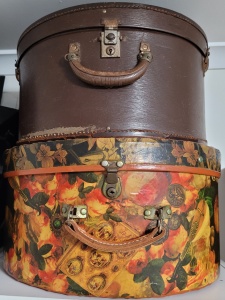 “I made a collection of hats expressly to show the buyers at David Jones in Queen Street. Nervously, hatted and with hat boxes bigger than me, I walked into the meeting, and walked out having my complete collection bought by them.”
“I made a collection of hats expressly to show the buyers at David Jones in Queen Street. Nervously, hatted and with hat boxes bigger than me, I walked into the meeting, and walked out having my complete collection bought by them.”
Thirty years on, with hundreds of unique, one-of-a-kind creations, made and worn around the world, Karen is full of ideas.
“Ideas come from everywhere,” Karen enthused. “It may be a colour, a pattern, the curve of a bird’s wing in flight, angles, architecture, historical costumes. More often, and strangely, I see the hat in a dream hoping to remember when I fully wake. I don’t do sketches; I physically begin making.”
To view the “making” means being invited inside the studio. My imagination lodged in the Victorian era conjures images of stepping inside a bricolage hatbox.
There are rolls of ribbons and trim all colours and textures, buckets of buckram, an abundance of pins long and short all fiercely sharp, scissors and pinking shears share a cosy drawer, hat boxes plain and fancy line the tops of shelves or sit beguilingly, largest to smallest, on the floor beside you. But the heart of hattery, in a showstopping display, floor to ceiling shelving laden with mind boggling shaped and sized wooden hat blocks alongside their companion, small to wide hat brim curved blocks. There is not much machinery evident. It is after all a hand-crafted art. Here the magic begins. This is where Karen’s dreams materialise.
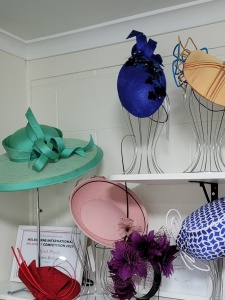 The scope of her millinery success has been worn in feature films and theatre productions, one-off specialty “art” creations commissioned for special events and launches, also a confidential clientele of global high-flyers. Worn at weddings, functions, and race meetings the world over.
The scope of her millinery success has been worn in feature films and theatre productions, one-off specialty “art” creations commissioned for special events and launches, also a confidential clientele of global high-flyers. Worn at weddings, functions, and race meetings the world over.
Finest materials, flawless finish is her hallmark. You are at the Rolls-Royce end of the market. An eye for detail sets Karen Bailey Millinery at the forefront.
“When a woman wears a hat she changes,” Karen enthused. “She is unafraid being watched, pointed out, talked about. Her stride is self-confident, her head higher, shoulders straight. She walks taller.”
Set outside Irene Molloy’s Millinery shop in the streets of New York Jerry Herman wrote in his musical Hello Dolly exactly what it takes to get away with wearing a hat to make it in society.
We got elegance
If you ain’t got elegance
You can never ever carry it off.
Style, sophistication, elegance is the yardstick of millinery perfection. At the very least a hat must be stylish however, styles come and go. To “complete the outfit”, the cloche, picture hat, beret, fedora, toque, pill box, boater have all been desired. Desire articulated as fashion must at best be sophisticated, most preferably elegant.
Do you remember Jackie Kennedy’s pink pill box hat, Audrey Hepburn’s black hat in Breakfast at Tiffany’s? Elegance.
On Derby Day in Melbourne 1965 British model Jean Shrimpton appeared, two hours late on the arm of boyfriend actor Terrance Stamp, in a simple white dress the hemline alarmingly ten centimetres about her knees. No stockings, no gloves, and scandalising racegoers, NO hat.
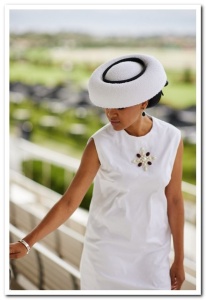 This brings us back to the Karen Bailey Millinery design making its debut in Paris today at Montmartre Marie Town Hall, a sold-out show of 300 people. A question was raised as to what could be done to refine Jean Shrimpton’s design choice. Hat or no hat? Karen’s hat called ‘Oops’, an imagined response to the fashion faux pas, is a simple, yet upon inspection, exquisitely refined black and white bowl-shaped hat. The white material having a slight “shimmering” effect caught both the light and breeze effecting a perfect counterpoint to the simple shift dress. At the back of the hat a black bow with sharp peaked points. Check a photo from 1965 and look at the toe of the shoes worn that day. Inspired.
This brings us back to the Karen Bailey Millinery design making its debut in Paris today at Montmartre Marie Town Hall, a sold-out show of 300 people. A question was raised as to what could be done to refine Jean Shrimpton’s design choice. Hat or no hat? Karen’s hat called ‘Oops’, an imagined response to the fashion faux pas, is a simple, yet upon inspection, exquisitely refined black and white bowl-shaped hat. The white material having a slight “shimmering” effect caught both the light and breeze effecting a perfect counterpoint to the simple shift dress. At the back of the hat a black bow with sharp peaked points. Check a photo from 1965 and look at the toe of the shoes worn that day. Inspired.
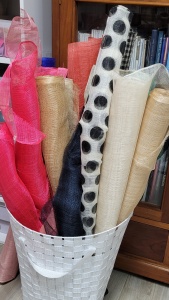 Success has been achieved competitively at London Hat Week, MAA Design Award, her latest Royal Brisbane Show entry won Best in Show and came first in its category.
Success has been achieved competitively at London Hat Week, MAA Design Award, her latest Royal Brisbane Show entry won Best in Show and came first in its category.
Hats are to be celebrated, something to sing about. Don’t lie, you’ve sung along to “In Your Easter Bonnet.” Randy Newman wrote “You Can Leave Your Hat On”, originally unambiguously growled by Joe Cocker, and in case you missed the memo first time round, re-confirmed by Tom Jones.
Back to the Rolls-Royce of lyricists, Stephen Sondheim and the gravel voiced Elaine Stritch, herself a hat wearer, wrote herself into theatre folklore with her biting delivery, “Does anyone still wear a hat?”
Yes, they do.
Which is good news for Karen.
She has taken a teenage high school student, intent on becoming a milliner, under her wing .
“I’m really pleased. The industry needs more men.”
View a gallery of Karen’s work: https://thegodlesstraveller.com/finishing-the-hat/
Visit Karen’s website: https://www.karenbaileymillinery.com.au/
Hat: Oops! Photo: Stavros Sakellaris Model: Rai Jones
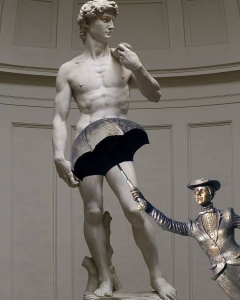 Deliberately, willfully. I committed an act of art bastardry. Gleefully, shamelessly. On public record denouncing those who desecrate, no cause excuses taking anger out on works of art. Yes, they were behind glass but, no, Extinction Rebellion, no. Yet I, sans remorse, in the name of good taste have taken to public art. And it felt good!
Deliberately, willfully. I committed an act of art bastardry. Gleefully, shamelessly. On public record denouncing those who desecrate, no cause excuses taking anger out on works of art. Yes, they were behind glass but, no, Extinction Rebellion, no. Yet I, sans remorse, in the name of good taste have taken to public art. And it felt good!
Hiring space inside the premises of a sex shop in Surry Hills, Sydney’s gay ghetto, friends opened a specialist bookshop. The first of its kind for Sydney. A risky move they were advised. But they hired me. “You’re good with people,” they said. I’d be casual staff. No experience, no training, no idea, genuinely enthusiastic. Yes, I’d be perfect.
After the first purchase I over rang the till by several hundred dollars. Exhibit one. Only an hour later, “I can’t do goes-intos, student discounts available only when I’m not manning the counter,” I gushed effusively. And winked. Poor stringy young thing misread, accusing me of making improper suggestions. I refused because I couldn’t work out the maths, or the cash register. Receipts for exhibit two, three and four all stapled neatly in the margins of the cash book. I over rang the till by one thousand two-hundred, and seventy-four dollars. And maybe several cents. An hour till lunch break.
But let me redirect you back in capital letters, to the premises. A SEX SHOP should that detail have escaped your attention. Oh, my goodness, the stuff being sold there, oh, oh, my goodness. I didn’t know what most of it was. Or for. I didn’t understand the “staff uniform” on the two mean muscle Mary leather men running their part of the shop. They wore very smart peaked and visored leather caps, lots of leather bits revealing most of their bits, held together by chains, metal rings, studded leather straps, and buckles. I certainly didn’t ask. Just gushed effusively. Wink. But I mean, come winter!
I stood neatly behind a wooden counter surrounded by “specialist” books, magazines, and street press publications knowledgeably dispensing wisdom and wise cracks to bewildered customers. So successful was my whisper campaign for The Glass Arcade men streamed through the door seeking their own copy of this “soon to be banned” salacious novel. Which it wasn’t. Either be banned or be salacious. Five boxes gathering dust in the corner sold in two days. The cash register ringing happily without a glitch.
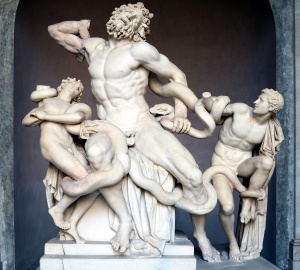 The walls painted black to best display lurid sex toys screamed, laughed, and pointed at me. My sphincter clenched every time I walked by. That small tartan thermos, a dildo. A boxed set of brushed steel designer hors d’oeuvre cutlery? Highly sought erotic sounding equipment. The cherry on top? At the rear a grotto housed an oversized sculpture of three naked men. Plaster of Paris on chicken wire, painted white. Locally handmade. I guess they were wrestling. It certainly was not Laocoon and Sons.
The walls painted black to best display lurid sex toys screamed, laughed, and pointed at me. My sphincter clenched every time I walked by. That small tartan thermos, a dildo. A boxed set of brushed steel designer hors d’oeuvre cutlery? Highly sought erotic sounding equipment. The cherry on top? At the rear a grotto housed an oversized sculpture of three naked men. Plaster of Paris on chicken wire, painted white. Locally handmade. I guess they were wrestling. It certainly was not Laocoon and Sons.
I spent lunchtime inside St Vinnies Op Shop making judicious choices. This evening I would be locking up. My time has arrived. To the grotto. Nylon wigs, one blonde, one brunette, one red found new homes on ugly heads. Three floral hats, once bountifully adorning cherubic red faces of morning tea Country Women’s Association Mums, tastefully topped corrosive faces of the three wrestling thugs. I couldn’t help but admire the improvement. The tone for my work set, I unleashed. Ropes of necklaces made of colourful beads, cheap glass, ceramic disks, plastic pearls, looped and coiled over necks, across shoulders, snaked up wrists in wanton fashion. A mauve cardigan hung deftly, setting off the musculature on a set of plaster shoulders. A feather boa trailed from another. A velour travel rug covered a kneeling vein popping leg. Long evening gloves slotted perfectly into a threatening fist. A pair of slingbacks swung from a finger pointing in anger. Each wore a vinyl handbag stuffed somewhere on their person.
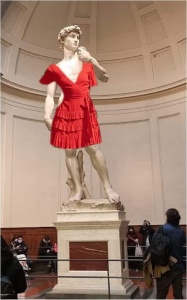 One final touch. A lipstick St Vinnies had in their “all stock must go” cardboard box. I began. Just a daub at first. Here, then there. Getting the feel, work gathered pace. Stepping back, I gasped. Against the white entangled bodies, my handiwork a triumph. Unmissable. Covered in lippie, burning fire engine gloss red, three sets of engorged oversize genitals.
One final touch. A lipstick St Vinnies had in their “all stock must go” cardboard box. I began. Just a daub at first. Here, then there. Getting the feel, work gathered pace. Stepping back, I gasped. Against the white entangled bodies, my handiwork a triumph. Unmissable. Covered in lippie, burning fire engine gloss red, three sets of engorged oversize genitals.
I was asked not to return. For that moment in gay history, I was the iconoclast, the desecrator, not bad for someone who up till then had risen to the dizzying heights of obscure cult figure singing in piano bars. The leather studs failed to see the humour. The artists, who also happened to be the leather studs, were outraged. Central to a major fundraising effort the sculpture to be first prize, rendered worthless. Their artwork desecrated. I was not sorry; I was annoyed they had the nerve to call it artwork. Goodness, give those plaster of Paris cock and balls a wash and a lick of paint. Good as new.
Surely there can be no doubt the Statue of David is an artwork. Parents of children attending a Florida school raised doubts. “Pornographic,” the call. “How dare you expose my children to such filth.” “Cover it up,” they shrieked. No! It’s art. Universally acknowledged as a renaissance masterpiece, Michelangelo’s greatest triumph over marble. Any wonder banner headlines circled global news services, “Florida principal resigns on principle.” Who would blame her. We have been blessed with a battery of memes. Not a bad trade-off for narrow mindedness.
Here’s the link to my public declaration against wilful destruction of artworks. In particular, The Statue of David.
https://thegodlesstraveller.com/his-left-foot/
Double click on any image below to enlarge.
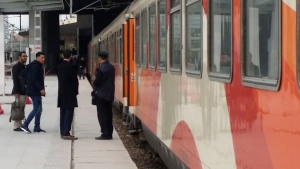 Locomotives officially opened for public railway use on 27 September 1825. Expanses of previously impassable terrain opened new frontiers beckoning adventurers onboard. Ever since, rail travel has inspired artists, writers, songwriters, and filmmakers spinning dreams of romance, mystery, excitement, espionage, grandeur, sophistication, illicit affairs, even murder. Two centuries later passengers are driven to ride the rails as a conveyance of convenience and practicality.
Locomotives officially opened for public railway use on 27 September 1825. Expanses of previously impassable terrain opened new frontiers beckoning adventurers onboard. Ever since, rail travel has inspired artists, writers, songwriters, and filmmakers spinning dreams of romance, mystery, excitement, espionage, grandeur, sophistication, illicit affairs, even murder. Two centuries later passengers are driven to ride the rails as a conveyance of convenience and practicality.
All the above was accounted for when seeking a mode of travel west to east across north Africa, Casablanca to Cairo. Laurence of Arabia was foremost in my mind. David Lean’s sweeping desert images played before me imagining seven weeks in a mass of swirling white linen robes perched elegantly atop a camel. The “ship of the desert” in a camel train over the Sahara lost all allure when being spit at upon coming face to face with a belligerent dromedary. Morocco was deemed an elevated travel risk. Political tension was high in Algeria, Tunisia, and Egypt. Libya’s borders already closed. Government travel advice, avoid these countries. Undeterred, I went. All border crossings would be by air, rail made best sense for on ground travel hence this inventory of the means and ways of rolling stock. And so, Morocco three weeks, Tunisia one week, Egypt three weeks. The North African adventure began. All aboard.
Casablanca Airport to City Port Station was the introduction to rail journeys and though well past its best-by date, this train is not dissimilar to the old Vic Rail red rattlers I had ridden as a youth. Vaguely comforting and familiar I leaned back into the cracked grey vinyl seat gazing out the window at unfamiliar shifting scenes. Clickety-clack past the mud brick urban sprawl before circling the Moorish jewel box architecture of the city, terminating amid the frenetic activity of the port fronting the Atlantic Ocean.
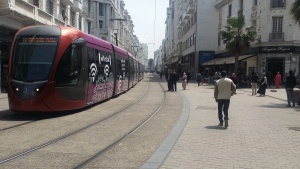 Casablanca’s rapid transit tramway system, two main lines, 71 stops, covers 47.4 kilometres proved simple to use and quick to see what is where in this mysterious city. So where is Rick’s Café? Spoiler alert. There is no such original establishment, it was created on set for the 1942 movie classic. To overcome tourist disappointment an American team replicated Rick’s Café opening on March 1, 2004, at Place du jardin public, 248 Boulevard Sour Jdid. Here’s looking at you kid.
Casablanca’s rapid transit tramway system, two main lines, 71 stops, covers 47.4 kilometres proved simple to use and quick to see what is where in this mysterious city. So where is Rick’s Café? Spoiler alert. There is no such original establishment, it was created on set for the 1942 movie classic. To overcome tourist disappointment an American team replicated Rick’s Café opening on March 1, 2004, at Place du jardin public, 248 Boulevard Sour Jdid. Here’s looking at you kid.
Looking 320 kilometres up the track waits Tangier. Departure station is Casa Voyageur arriving 2:10 hours later at Tanger Ville. The train is a two-class system. First class guarantees a reserved seat in a numbered compartment shared by six passengers. Second class is a free for all so choosing time of travel is imperative. A word about Moroccan currency the dirham. Currency cannot be purchased outside Morocco before you arrive, and upon departure dirham cannot be removed with you. Exchange carefully. Second class fares vary between 99 to 224 dirhams, first class is 292 dirhams (approximately $AUS 44.00). Prices vary according to the time of travel. I purchased my 1st class ticket a couple of days prior to departure. There are frequent train connections available every day, and luggage travels in the compartment with you. Pack wisely.
Similarly, the train from Tangier to Fez runs frequently timetabled services which are affordable, reliable, comfortable, clean, and safe. Rail travel around Morocco makes good sense.
Next, fly to Tunis, capital city of Tunisia home of the Arab Spring uprising. On the streets there is discernible unrest. Heavily armed military patrol the streets, and man barricades at important infrastructure facilities. Day three Ramadan begins, the most sacred month of the year in Islamic culture, clearing the streets from daylight to dusk of all but the profane infidels and shopkeepers who seek to feed them. The upside is clear access to the ancient ruins of Carthage fifteen kilometres north of the city and an almost empty Bardo National Museum, both highly recommended and readily accessible by rail.
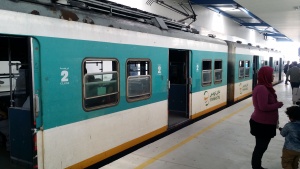 What looks like a rust bucket is the simplest way to get to the ruins of Carthage. The teal and white carriages of the TGM train are not in a race to win most beautiful wheeled transport. Interior seating is bare minimum, being hot and sticky inside windows and doors are mostly left open. It is no-frills, cheap, serviceable, practical, and it gets you there in around thirty minutes from Tunis Marine Station to Carthage Hannibal. Upon exit prepare to negotiate wildly as taxi drivers pounce promising the best tour at the best price. Hold extra in reserve, your driver will expect a tip. Give it over generously thanking them profusely – this is their livelihood, and you still got a great deal.
What looks like a rust bucket is the simplest way to get to the ruins of Carthage. The teal and white carriages of the TGM train are not in a race to win most beautiful wheeled transport. Interior seating is bare minimum, being hot and sticky inside windows and doors are mostly left open. It is no-frills, cheap, serviceable, practical, and it gets you there in around thirty minutes from Tunis Marine Station to Carthage Hannibal. Upon exit prepare to negotiate wildly as taxi drivers pounce promising the best tour at the best price. Hold extra in reserve, your driver will expect a tip. Give it over generously thanking them profusely – this is their livelihood, and you still got a great deal.
 “Métro léger” is the light rail system that runs through the city. The track sweeps along at surface level on its own rail bed. The trains are usually coloured green. If you have survived Melbourne’s “whispering death” trams you have requisite skills to survive. Showing signs of wear and tear but certainly not enough to deter its hop on hop off nature. Even as the cheapest travel choice, fair evasion is the most widely used option. Join the locals as they jump out and scuttle over fences, bustle away via side streets, or scamper down underground tunnels, dispersing anywhere except exit gates where tickets must be shown. And yes I did. I scuttled. Fences no barrier to me.
“Métro léger” is the light rail system that runs through the city. The track sweeps along at surface level on its own rail bed. The trains are usually coloured green. If you have survived Melbourne’s “whispering death” trams you have requisite skills to survive. Showing signs of wear and tear but certainly not enough to deter its hop on hop off nature. Even as the cheapest travel choice, fair evasion is the most widely used option. Join the locals as they jump out and scuttle over fences, bustle away via side streets, or scamper down underground tunnels, dispersing anywhere except exit gates where tickets must be shown. And yes I did. I scuttled. Fences no barrier to me.
Cairo, described to me as looking like stacks of crumpled brown papers bags, is surely one of the most confounding cities in the world, yet mysteriously compelling. Day one: purchase train tickets from Cairo onwards north to Alexandria return, and upon return change trains in Cairo south for Luxor on the highly touted overnight sleeping train. Cairo’s Ramses Station is cavernous, echoing, bustling, pushy, noisy, airless. The ticket vending machines and atm’s mostly dysfunctional. To laconic railway staff, customer service is an unwanted distraction. Moving between ticket service windows became a game of potluck discovering there are hourly departures to Misr Station in Alexandria either on a two-and-a-half-hour express service or the four-hour fifty-minute milk run. An easy choice but, three more service windows before I could make the purchase. The fly in the ointment being the return date and time. The saving grace is a cheap fare, air-conditioned, 1st class reserved seat and lordy a refreshment trolley that usually comes down the train selling tea, coffee & soft drinks.
Day two: roam the Egyptian Museum.
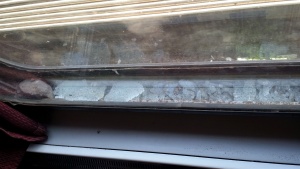 Day three: with travel tickets secured board the train for Alexandria and get the hell out of here for the next two weeks. At the time of departure Ramses Station is not as intimidating as the experience two days earlier. Platform attendants smiled and were helpful. Securing my luggage and taking my designated seat I see shattered glass and a rock wedged between the two (now one) layers of windowpane. A relic of recent attacks across the country became a sudden reminder of exactly where I was. The journey validated the choice of travelling by rail beginning with the rarity of on-time departure, witnessing lives lived along the Nile, and lordy the arrival of the refreshment trolley. Alexandria’s Misr Station though run down is thick with atmosphere where the ghosts of romance-seekers past echoe grander days. My room at Windsor Palace Hotel opens directly onto the Mediterranean Sea separated only by the Grand Corniche. Five weeks in North Africa has not dulled my senses.
Day three: with travel tickets secured board the train for Alexandria and get the hell out of here for the next two weeks. At the time of departure Ramses Station is not as intimidating as the experience two days earlier. Platform attendants smiled and were helpful. Securing my luggage and taking my designated seat I see shattered glass and a rock wedged between the two (now one) layers of windowpane. A relic of recent attacks across the country became a sudden reminder of exactly where I was. The journey validated the choice of travelling by rail beginning with the rarity of on-time departure, witnessing lives lived along the Nile, and lordy the arrival of the refreshment trolley. Alexandria’s Misr Station though run down is thick with atmosphere where the ghosts of romance-seekers past echoe grander days. My room at Windsor Palace Hotel opens directly onto the Mediterranean Sea separated only by the Grand Corniche. Five weeks in North Africa has not dulled my senses.
Novelist E.M. Forster transfixed by Alexandria’s charm wrote a history and a guide. Lawrence Durrell, author of The Alexandria Quartet, lived at the Cecil Hotel just three doors away. Centuries of volatile history etched into the landscape is at your fingertips. Attempts to use the network of trams outwitted me. The best I can say there is a red one, a green one, and a blue one. Guided by a paper map I explored by foot and watched the trams shuttle past.
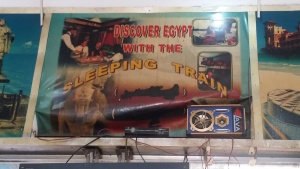 “Discover Egypt with the Sleeping Train” seems to defeat the purpose of being a tourist. The pitch being an air-conditioned sleeping-car, a secure, lockable compartment. Each compartment has a fold down bed, washbasin, soap, towel, and clean bedding. A 2-pin shaver socket near the sink can also recharge cameras and mobiles with a suitable adaptor. Luggage goes in your compartment, there’s a recess over the door for large bags. The fare includes a basic airline-style tray-meal in the evening and a simple breakfast, although tea & coffee are charged for. I took the bait from Cairo to Luxor. The reality less than the promise. I am tall, the bed is narrow. I am old, so is the train however, I think I may be in better condition. Foreigners are charged higher fares than Egyptian nationals.
“Discover Egypt with the Sleeping Train” seems to defeat the purpose of being a tourist. The pitch being an air-conditioned sleeping-car, a secure, lockable compartment. Each compartment has a fold down bed, washbasin, soap, towel, and clean bedding. A 2-pin shaver socket near the sink can also recharge cameras and mobiles with a suitable adaptor. Luggage goes in your compartment, there’s a recess over the door for large bags. The fare includes a basic airline-style tray-meal in the evening and a simple breakfast, although tea & coffee are charged for. I took the bait from Cairo to Luxor. The reality less than the promise. I am tall, the bed is narrow. I am old, so is the train however, I think I may be in better condition. Foreigners are charged higher fares than Egyptian nationals.
It was welcome relief at 6am being cast into the pre-dawn of Luxor. I wheeled my suitcase through the shadowy streets to Hotel Nefertiti (I kid you not) whereupon I was invited to take breakfast on the rooftop. With the sun breaking over Luxor temple, the Nile River already alive with feluccas, just visible in the distance sits Queen Hatshepsut’s temple nestled into the Valley of the Kings. With one-hour flights from Luxor to Cairo the same price as the sleeping train it was an easy decision. My North African adventure with rail travel is complete.
In Amsterdam, asking “where are the dykes?” is as fraught with danger as asking a black waitress in Mobile Alabama for a cup of white coffee. And I’ve done both. In my defence the racist gaffe was in 1976, aged 26, travelling across America on a 15-day Greyhound bus pass. Certainly not as evolved as I would like to think I am now. But that is also under revision since the Dutch woman I asked was less than impressed and peddled off down the bike lane that I had just deliberately stepped into to speak with her. That she was brutishly stout, steel grey hair styled in a pudding cut, more Hattie Jacques from the Carry On movies than Inge de Bruijn Netherlands Olympic swimming champion, was not intentionally stereotyping, racially profiling, or sexist. She was just the only one going slow enough for me to stop. The Zuiderzee is the answer to dykes, and as a courtesy all American waitresses ask if you would like cream in your coffee.
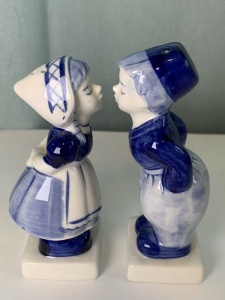 My affinity for Holland began early. All of nine years old, Judy Dixon and me singing “I’m A Little Dutch Girl/Boy”, complete with clog dance, at our State School’s show-and-tell concert. Some things don’t travel well over time. Song lyrics for instance. Within six verses as husband-and-wife Lena and Yarkov, wretchedly poor fishers, we bemoaned our beggarly circumstances. Lena sewed and patched Yarkov’s breeches until she had nothing left to sew. On show for all to see while dressed in our Mums version of threadbare Dutch costumes. From memory we didn’t come close to looking like the Delft ceramic girl and boy pepper and saltshakers. It was inevitable I would one day want to visit the country that gave me such a start in life.
My affinity for Holland began early. All of nine years old, Judy Dixon and me singing “I’m A Little Dutch Girl/Boy”, complete with clog dance, at our State School’s show-and-tell concert. Some things don’t travel well over time. Song lyrics for instance. Within six verses as husband-and-wife Lena and Yarkov, wretchedly poor fishers, we bemoaned our beggarly circumstances. Lena sewed and patched Yarkov’s breeches until she had nothing left to sew. On show for all to see while dressed in our Mums version of threadbare Dutch costumes. From memory we didn’t come close to looking like the Delft ceramic girl and boy pepper and saltshakers. It was inevitable I would one day want to visit the country that gave me such a start in life.
Mid planning stage attempting to accommodate myself for a week it became abundantly clear neither quaint rooftop, loft, attic, or houseboat would be “my thing.” This is the domain of storks, mice, and Anne Frank. Crawl spaces made accessible via narrow wooden stairs rebranded boutique, authentic, chic, original with a price tag to match. I cast my net wider. I’m a quick and savvy traveller. Staying in Amsterdam Zuid (South) puts me outside the five rings of canal systems that are the charm, mood, and mystique of inner urban living where residents chafe with tourists who clog (not the shoe, not the dance) the limited space available. Anything to savour raw Bohemia.
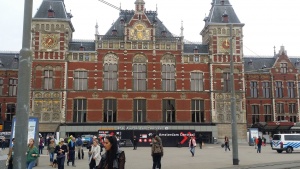 All roads lead to Rome but in Amsterdam, all trains, ferries, and trams lead to Central Station. From this point you fan out dispersing yourselves down narrow laneways to ogle canal front houses. If you’ve divested €6,50 buying the 90-minute Bus Tram Metro ticket you clearly have a plan and not wasting a minute quickly redeploy. To get a sense of what makes the city tick, and how best use can be made of covering ground on limited time, I took to the water. For one hour and €12 I boarded an Amsterdam Canal Exploration tourist boat, a sleek lean hulled craft carrying boisterous unrestrained children with uncaring parents who smoked. Gliding the waterways, slipping past anchored riverboats abundant with greenery, and alive with human activity going about everyday chores cooking cleaning hanging the wash, these are permanent homes to thousands. Multi storied doll-house dwellings packed side-by-side grow out of canals or burst through stone pavements. Recent severe weather has uprooted and tumbled age-old trees into the canal. A stark reminder of the delicate balance when living in close harmony with the environment. Viewing from the canals has the advantage of perspective not seen at ground level. Intimacy develops with the city.
All roads lead to Rome but in Amsterdam, all trains, ferries, and trams lead to Central Station. From this point you fan out dispersing yourselves down narrow laneways to ogle canal front houses. If you’ve divested €6,50 buying the 90-minute Bus Tram Metro ticket you clearly have a plan and not wasting a minute quickly redeploy. To get a sense of what makes the city tick, and how best use can be made of covering ground on limited time, I took to the water. For one hour and €12 I boarded an Amsterdam Canal Exploration tourist boat, a sleek lean hulled craft carrying boisterous unrestrained children with uncaring parents who smoked. Gliding the waterways, slipping past anchored riverboats abundant with greenery, and alive with human activity going about everyday chores cooking cleaning hanging the wash, these are permanent homes to thousands. Multi storied doll-house dwellings packed side-by-side grow out of canals or burst through stone pavements. Recent severe weather has uprooted and tumbled age-old trees into the canal. A stark reminder of the delicate balance when living in close harmony with the environment. Viewing from the canals has the advantage of perspective not seen at ground level. Intimacy develops with the city.
Here I am. Early summer and the tulips are as good as gone; windmills are scarce on the ground. Vincent van Gogh Museum booked out, but I discovered cheese wheels and tasting boards. Found the Red-Light district but couldn’t find Anne Frank’s huis. Smell of dope from cafes gives me the munchies and a headache, the World Press Photo exhibition gives me hope and lifts my spirits. Vincent van Gogh Museum still booked out, caught a bus to Haarlem and visited Frans Hals huis. Tulip bulbs readily available for purchase, customs prohibit entry to Australia. Still can’t get into Vincent van Gogh Museum, but The Milkmaid and The Night Watch are on display at Rijksmuseum. Clogs, clogs, everywhere clogs, then happened upon Fluevog where fashion footwear and art collide. Inadvertently ambled past Rembrandt’s huis, later I walked to a bend in the Amstel River and saw the houses Rembrandt sketched. The niggling cough I arrived with has deepened, with 7 weeks travel to go considering pulling the plug and going home.
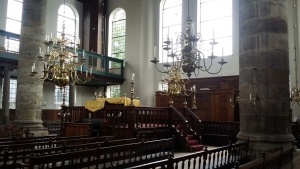 The Jewish Quarter, five locations one ticket. Began at the Jewish Historical Museum, the Children’s Museum, across the road to the Portuguese Synagogue. A slow reflective walk along Plantage Middenlaan housing the National Holocaust Museum before finishing at the National Holocaust Memorial. That the Quarter exists is testament to the strength, endurance, and courage of Jews. Unnerving to witness acts of calculated, systematised genocide. The holocaust is not driven by religious persecution; the hatred engendered to perpetrate action is not inherent. Hate is learned. The root of this evil is political. Evil is marching again gaining global traction.
The Jewish Quarter, five locations one ticket. Began at the Jewish Historical Museum, the Children’s Museum, across the road to the Portuguese Synagogue. A slow reflective walk along Plantage Middenlaan housing the National Holocaust Museum before finishing at the National Holocaust Memorial. That the Quarter exists is testament to the strength, endurance, and courage of Jews. Unnerving to witness acts of calculated, systematised genocide. The holocaust is not driven by religious persecution; the hatred engendered to perpetrate action is not inherent. Hate is learned. The root of this evil is political. Evil is marching again gaining global traction.
The changing ironies of life walked me back, retracing my earlier path to The Hortus, one of the oldest botanic gardens in the world, originally a medical herb garden. A small irregular shaped 1.2 hectares conserved to generate well-being. A place where doctors and pharmacists practiced herbal medicine, where citizens sought curatives. Pause, breathe, reality check; feeling ashamed to think after all I’d just learned I considered fleeing home because of a mild flu.
One day left in Amsterdam before boarding FlixBus and seven hours to Berlin. On a whim I returned to lodgings via the Van Gogh Museum. Persistence rewarded, 11:00am tomorrow.
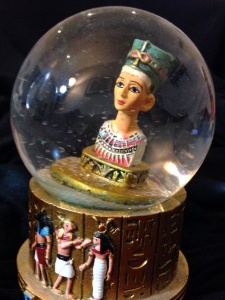 Through the swirling snowflakes a wan female face peers. Captured inside the glass dome is the world’s most beautiful woman, Queen Nefertiti, wife of Pharoah Akhenaton who ruled Egypt between approximately 1370 and 1333 BC. Feeding the fantasy of Egyptology this little tourist treasure remains a best seller the length and breadth of the Nile River from Alexandria to Aswan. The variants advanced over time and technology have not dimmed her allure.
Through the swirling snowflakes a wan female face peers. Captured inside the glass dome is the world’s most beautiful woman, Queen Nefertiti, wife of Pharoah Akhenaton who ruled Egypt between approximately 1370 and 1333 BC. Feeding the fantasy of Egyptology this little tourist treasure remains a best seller the length and breadth of the Nile River from Alexandria to Aswan. The variants advanced over time and technology have not dimmed her allure.
Her beauty is not confined to snow globes, freestanding miniatures to full sized, and extra OS replicas, unadorned to outlandishly gaudy, all tastes catered for. If that is not your style there are still T-towels, dinner mats, drink coasters, papyrus wall hangings, and an unimaginable range of T-shirt designs. Brandishing their piece of take-away Egypt, stall holders and touts engage tourists in the game of haggling and will chase you into the Sahara Desert, around ancient archaeological sites, through narrow overcrowded laneways, up and down rugged outcrops, over rubble strewn carparks in the blazing heat of day, into the dead chill of night. This is a game played every day, and you will not leave empty handed.
Spare a thought now for the original Nefertiti. Did you know she lives in Berlin? The sole occupant in a salubrious architect designed room, and like her bottled facsimile caged under glass. Albeit in a larger case hermetically sealed for her own preservation. Sat on a pedestal positioned slightly above eye level viewers gaze up at her, 48 cm (19 inches) tall, weighing 20 kg (44 lbs). Home to Nefertiti is Neues Museum, one in the cluster of five on Museum Island in Central Berlin. The journey to what is largely accepted to be her last resting place has been arduous.
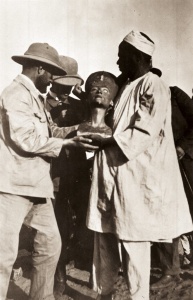 Hauled from the Sahara’s shifting sands at Tell el-Armana near Cairo on 6 December 1912 during a German excavation campaign led by Egyptologist and architectural historian Ludwig Borchardt and scurrilously shipped to Berlin in 1913 she was presented to a wholesale cotton merchant, the sponsor of the excavation. James Simon, the recipient, had her on display in his home until lending her to the Berlin Museum. She became a permanent acquisition in 1920 but kept under wraps until 1924. Presented to the world Nefertiti created a sensation becoming an icon of feminine beauty, a universally recognised artifact from Ancient Egypt. The onset of World War II in 1939 closed the museum. Moved to shelter for safekeeping Nefertiti was once more plunged into a dark underground world.
Hauled from the Sahara’s shifting sands at Tell el-Armana near Cairo on 6 December 1912 during a German excavation campaign led by Egyptologist and architectural historian Ludwig Borchardt and scurrilously shipped to Berlin in 1913 she was presented to a wholesale cotton merchant, the sponsor of the excavation. James Simon, the recipient, had her on display in his home until lending her to the Berlin Museum. She became a permanent acquisition in 1920 but kept under wraps until 1924. Presented to the world Nefertiti created a sensation becoming an icon of feminine beauty, a universally recognised artifact from Ancient Egypt. The onset of World War II in 1939 closed the museum. Moved to shelter for safekeeping Nefertiti was once more plunged into a dark underground world.
It would be another six years of shuffling locations before she was to reclaim her position as the most famous bust of ancient art, comparable only to the mask of Tutankhamun. She was brought back to light post war in March 1945 by the American Army, and handed over to its Monuments, Fine Arts and Archives branch. After the brutalities of a long war having escaped Berlin, survived burial in the salt mines, rattled up the bombed-out roads to Frankfurt and endured seclusion in the vaults of the Reichsbank, the crate containing Queen Nefertiti rolled onto the Rhine River docks at Wiesbaden. Workers pried open her crate, peeled off a protective inner wrapping of tarpaper to come to a thick cushioning layer of white spun glass. “The Painted Queen is here,” a worker cried. “She’s safe!” But not yet home.
The abridged trip home reads: on public display in Wiesbaden in 1946 before transferred in 1956 to a museum in West Berlin (the city still divided East/West by the wall). In 1967 the bust is moved to the Egyptian Museum in a borough of Berlin and remained until 2005. She returns to the Neues Museum as its centrepiece when the museum reopened in October 2009. Queen Nefertiti living up to the translation of her name “the beautiful one has come forth.”
Her public debut in 1924 was auspicious. Capturing imagination, she rapidly impinged on the consciousness of the western world who grappled to describe her rarity. More than allure and charisma, she personifies and embodies hauteur. Helen of Troy’s face may well have launched a thousand ships, but Nefertiti with only one eye and a badly chipped right ear spawned a billion-dollar beauty industry. An Egyptian proverb goes, ‘a beautiful thing is never perfect.’
Her chequered history has served to raise her profile, enhance the mythology, enshrine her iconic stature, raise the enchantment levels, commanding attention, captivating an adoring global public. It was not long, and not unexpected, until her image was objectified, commodified, and entered popular culture.
In 1935 the American science fiction horror film Bride of Frankenstein borrowed heavily for the distinctive look designed by Jack Pierce, played with startling effect by Elsa Lanchester. Showbusiness phenomenon and ugly duckling, Barbra Streisand appropriated Nefertiti’s image for the 1966 television special and album release, Color Me Barbra. In 1989 a 70-pfennig stamp featured the bust of Nefertiti on issue in Germany. Iman embodies her in the 1992 Michael Jackson video clip Remember the Time. Her bust appeared in 1999 on an election poster for the German green political party as a promise for a cosmopolitan and multi-cultural environment with the slogan “Strong Women for Berlin!”
Every make-up maven’s wildest dreams were answered as Helena Rubenstein, Revlon, Max Factor, Elizabeth Arden were early starters in products specifically aimed at achieving the Egyptian look. Fashion evolves, over time favourite trends peak, then disappear, only to return for a second, fourth, tenth season. The death of Amy Winehouse in 2011 took her heavily mascaraed Egyptian influenced eye make-up look with her. Yves Saint Laurent put it best when he said, “The most beautiful make-up of a woman is passion. But cosmetics are easier to buy.”
By 2015 Algerian model Farida Khelfa spectacularly covered Nefertiti for Christian Louboutin Beauty, photographed by Ali Mahdavi. No denying Rihanna’s commitment to Nefertiti evidence is worn as a rib tattoo. However, her 2017 Vogue Arabia cover was not met well, rounded on for cultural appropriation. One Twitter user stated: Ok sorry but Rihanna is NOT Egyptian girl you’re a queen yes, but take that crown off.
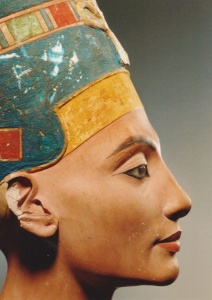 And so, we return to Berlin where the cult of Nefertiti began. Through the intervening years controversy has followed. Doubts cast as to the authenticity of the bust dogged but never dulled her. Carbon dating and extensive 3D imaging silenced the rumour mongers putting them out of business. Calls for her to be returned to her country of origin persist. Egypt’s claim she was stolen and spirited out of the country by the German excavation team are at the heart of the matter.
And so, we return to Berlin where the cult of Nefertiti began. Through the intervening years controversy has followed. Doubts cast as to the authenticity of the bust dogged but never dulled her. Carbon dating and extensive 3D imaging silenced the rumour mongers putting them out of business. Calls for her to be returned to her country of origin persist. Egypt’s claim she was stolen and spirited out of the country by the German excavation team are at the heart of the matter.
Remember James Simon, the Berlin cotton merchant she was gifted too? As a dying wish he requested she be repatriated but was refused. Egypt’s deposed Prime Minister Hosni Mubarak drove the final nail into the debates coffin. He stated she could stay in Berlin as she did more for Egypt’s tourism industry than advertising could ever achieve. The bust is still “a Berlin woman”, as the author Dietmar Strauch calls Nefertiti in his book published in 2017, “James Simon: The Man who Made Nefertiti a Berliner.”